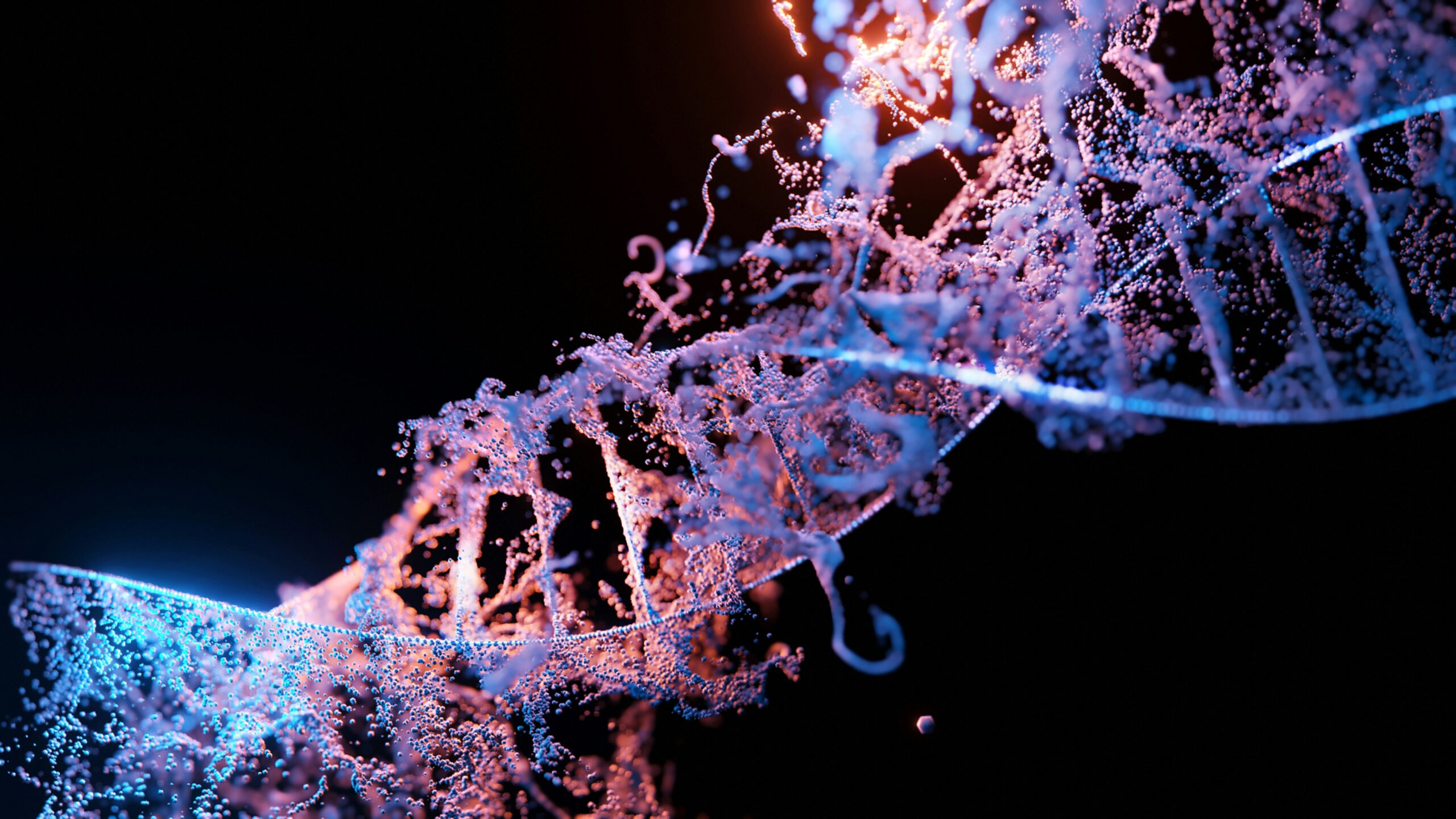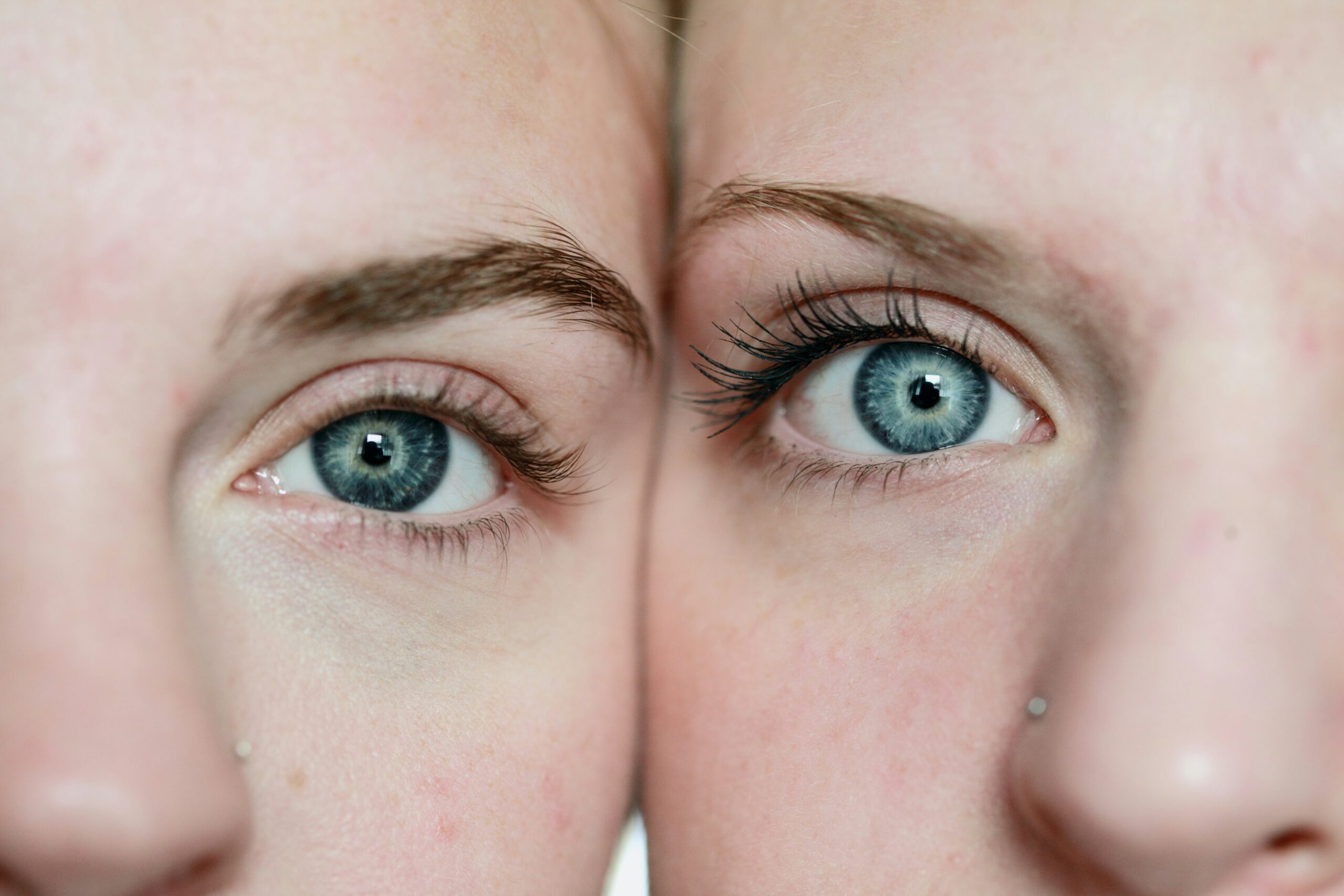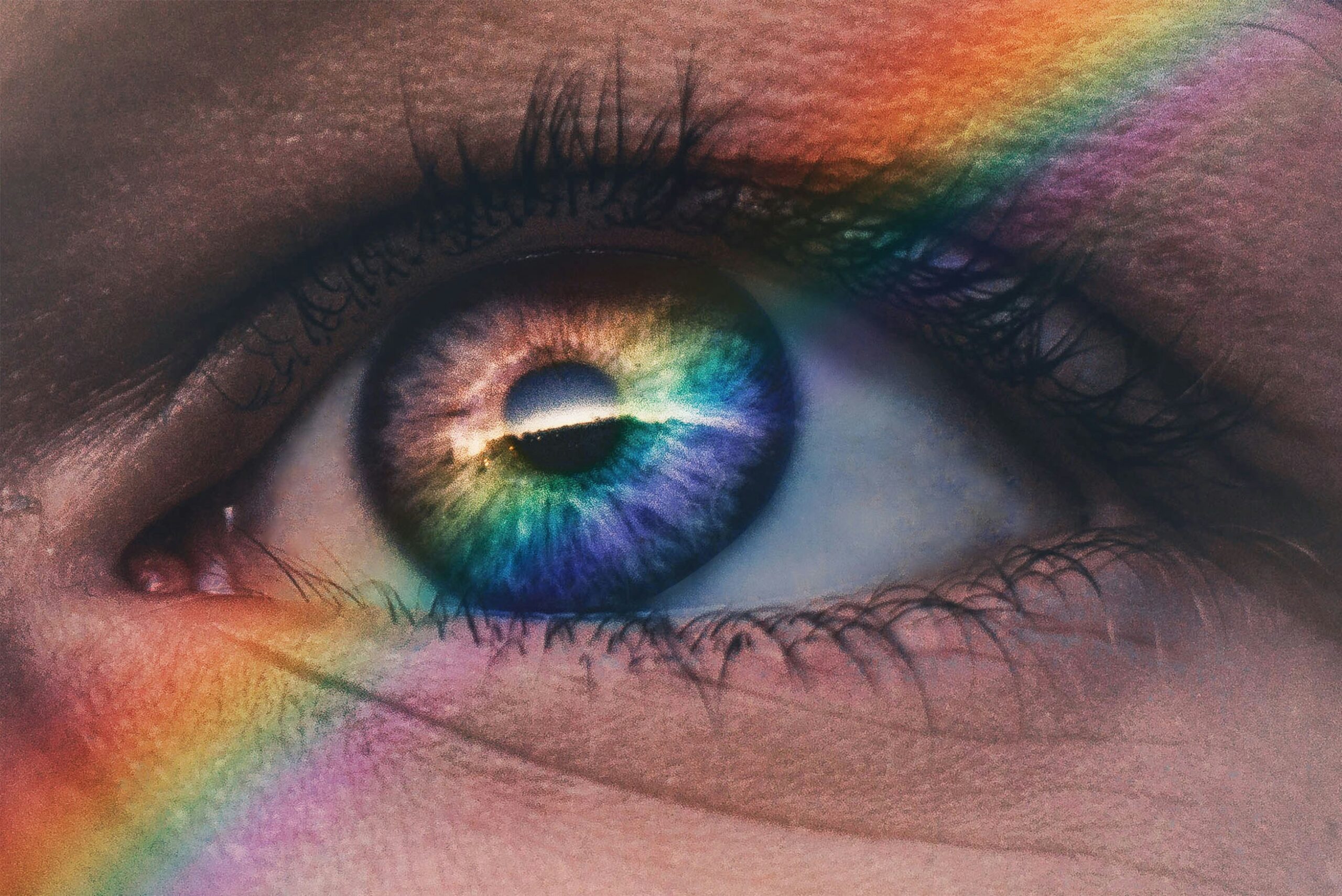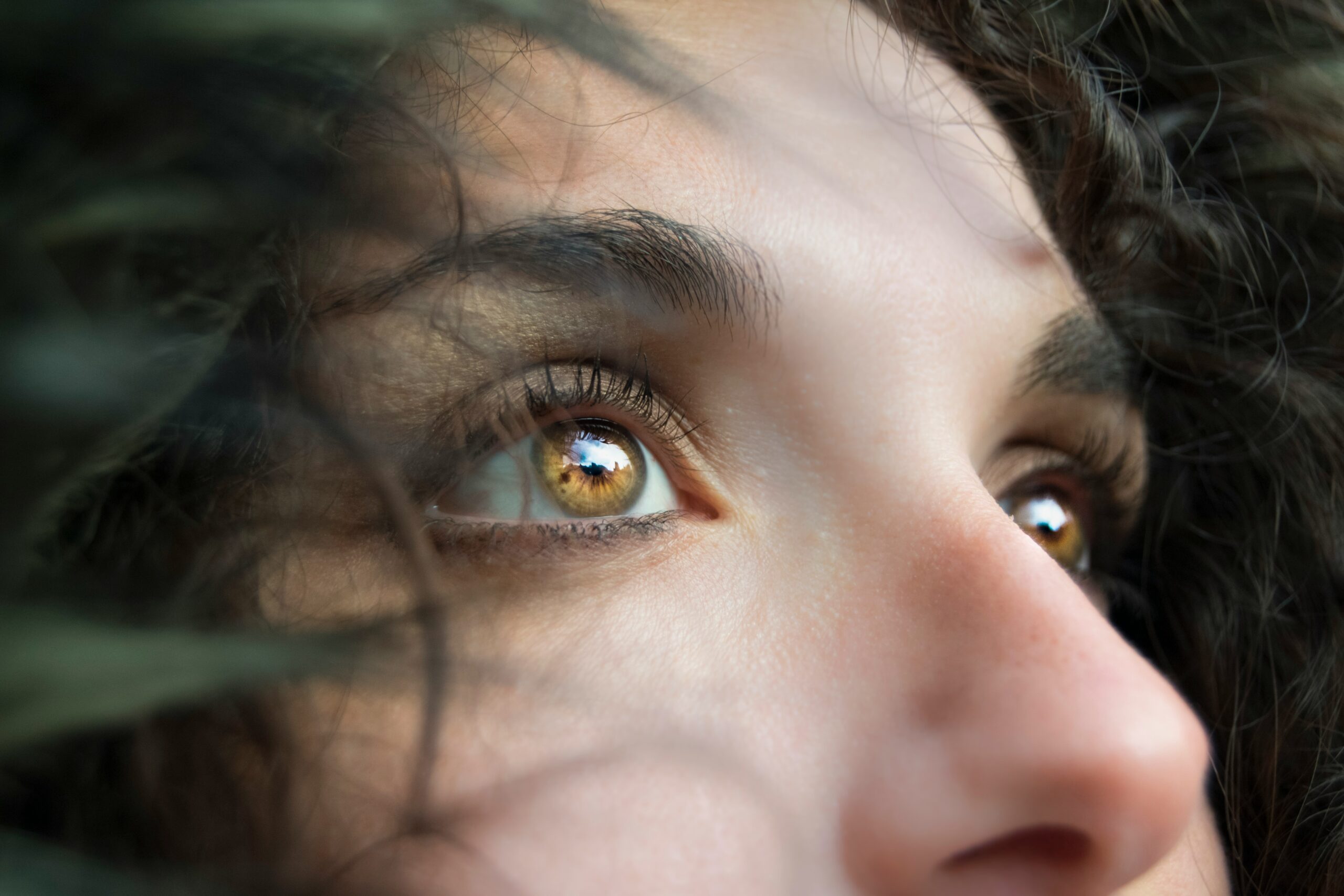Albinism is a term used to describe a group of diseases with a genetic basis, the main characteristic being a deficiency or absence of melanin biosynthesis in melanocytes. Melanin is a natural, organic chemical compound, a pigment of the skin, hair, and even the eyes.
The mechanism of this disease grouping has yet to be fully understood. The cause is mainly attributed to genetics, but there are also different theories.

The symptoms of albinism are characteristic and easy to recognize. Patients are characterized by skin, hair, and iris color discoloration. There are various varieties of albinism. In addition to the change in skin and hair color, the symptoms of albinism include general symptoms occurring in multiple degrees of severity. The symptoms are related to the effects of melanin deficiency. Due to natural protective barrier damage, patients are susceptible to UV radiation.
Diagnosis of albinism is made based on characteristic clinical signs, mainly the appearance of the skin. Detailed diagnosis involves genetic testing. Assuming that albinism is a genetic disorder, there is no practical method to cure the disease completely. Treatment focuses on maintaining proper skin, hair, and eye condition and continuous monitoring of the condition. People with albinism have an increased risk of various diseases and conditions, including cancer.
Various theories have been proposed about the causes of albinism. Some have pointed to autoimmune diseases or oxidative stress. Nowadays, scientists tend to assume that albinism is primarily a genetic disease. Each type of albinism is the result of inherited mutations. Genetic mutations cause defective melanocytes![]() , which cannot synthesize or distribute melanin properly. In albinism, the number of melanocytes in the skin is conserved.
, which cannot synthesize or distribute melanin properly. In albinism, the number of melanocytes in the skin is conserved.

Albinism is an autosomal recessive![]() disorder, rendering the melanin pigment entirely or partially absent. This inability to produce pigment gives patients a distinctive appearance. The variability and intensity of symptoms vary, ranging from complete absence of pigmentation to mild depigmentation. Albinism phenotypes are caused by mutations in the genes encoding the protein respectively. Genetic mutations mean that albinism is a disease that persists from birth, and a complete cure is not possible.
disorder, rendering the melanin pigment entirely or partially absent. This inability to produce pigment gives patients a distinctive appearance. The variability and intensity of symptoms vary, ranging from complete absence of pigmentation to mild depigmentation. Albinism phenotypes are caused by mutations in the genes encoding the protein respectively. Genetic mutations mean that albinism is a disease that persists from birth, and a complete cure is not possible.
Albinism is divided into two types, which may differ in their symptoms. A distinction is made between syndromic![]() and non-syndromic
and non-syndromic![]() kinds of albinism. Syndromic forms of albinism indicate defects in melanin production and other cellular proteins. Additional systemic symptoms are also present in these forms of the disease. In contrast, non-syndromic forms of albinism are associated with mutation of genes related to melanocyte differentiation, proteins, and melanin synthesis, which causes only hypopigmentation. It means that systemic symptoms do not occur. In addition to it, albinism can be divided into the following types:
kinds of albinism. Syndromic forms of albinism indicate defects in melanin production and other cellular proteins. Additional systemic symptoms are also present in these forms of the disease. In contrast, non-syndromic forms of albinism are associated with mutation of genes related to melanocyte differentiation, proteins, and melanin synthesis, which causes only hypopigmentation. It means that systemic symptoms do not occur. In addition to it, albinism can be divided into the following types:

Ocular albinism (OA) affects only the visual pathway. It is characterized by ocular hypopigmentation and associated with various vision problems. Symptoms include impaired visual acuity and depth perception. Other abnormalities include nystagmus or photophobia. Ocular problems usually worsen with age.
In this type of albinism, abnormalities associated with melanin biosynthesis cause skin, hair, and eyes hypopigmentation. The symptoms of oculocutaneous albinism affect the skin, but visual problems also occur. The level of altered pigmentation of the skin and hair can vary in intensity. There is a risk of skin cancer in the case of albinism.
The symptoms of albinism can be divided into those that affect only the visual organ and those that affect the skin and hair. Skin symptoms can vary in intensity, with the greatest intensity seen in cases with a complete lack of melanin. Other, less extreme forms of albinism have little pigmentation, which may increase over time. Ocular manifestations can also be mild or more severe.
Ocular symptoms are usually related to pigmentation but include various vision problems. It is a common symptoms that occur in both OA and OCA types of albinism. Vision symptoms include the following:

In albinism, the pigmentation of the iris is reduced. Eye color may be atypical, but it is usually light-colored. It distinguishes various eye colors, including pink, light blue, green, grey, and light brown. There may also be the symptom of iris transillumination defect (TID)![]() , which involves pink irises with a spoke circle appearance. This specific appearance of the irises is revealed in the light or during slit-lamp examination. In addition to this, a specific retinal color may also be present. The retina in patients may be yellow or orange. It is caused by hypomelanosis of the retinal epithelium. The retina loses its normal red appearance and has visible choroidal vessels.
, which involves pink irises with a spoke circle appearance. This specific appearance of the irises is revealed in the light or during slit-lamp examination. In addition to this, a specific retinal color may also be present. The retina in patients may be yellow or orange. It is caused by hypomelanosis of the retinal epithelium. The retina loses its normal red appearance and has visible choroidal vessels.
This symptom refers to a hypersensitivity to light. Patients may perceive occurring light, natural or artificial, as brighter than it is. Photodiscomfort may also arise, denoting significant discomfort in an overexposed environment. The pain can occur even when the light source is not characterized by high intensity. As a result, the eyes may hurt or tear, and frustration and irritation may also happen.
Many people with albinism have refractive errors such as astigmatism. It is a common problem among patients. Astigmatism refers to an abnormal, according to health criteria, the shape of the rotating eyeball. The surface of the eye is not completely spherical, meaning that light entering the eye is diffused and does not focus properly on the retina, causing blurriness. It is felt as a crooked image, worsening sharpness and contrast sensitivity. The abnormal shape of the cornea makes the image blurry and hazy. Astigmatism is a common visual defect that can cause blurred and unclear vision at a distance.
Another refractive error that occurs in albinism is myopia![]() . Myopia is a visual defect in which parallel light rays entering the eye are refracted not on the retina but in front of it. Patients see distant objects indistinctly and squint their eyes to sharpen the image. Hyperopia
. Myopia is a visual defect in which parallel light rays entering the eye are refracted not on the retina but in front of it. Patients see distant objects indistinctly and squint their eyes to sharpen the image. Hyperopia![]() is also present in albinism. However, it is rare. Hyperopia is one of the most common eye defects. It is characterized by a clear vision of objects far away but a blurred vision of those nearby.
is also present in albinism. However, it is rare. Hyperopia is one of the most common eye defects. It is characterized by a clear vision of objects far away but a blurred vision of those nearby.

In albinism, there is often foveal hypoplasia on dilated eye examination, which means a lack of foveal reflex![]() . Hypoplasia of the fovea is a condition in which the central part of the macula has not developed correctly. It can cause reduced visual acuity and other coexisting ocular disorders. Advanced foveal underdevelopment affects reduced visual acuity and may limit different visual functions.
. Hypoplasia of the fovea is a condition in which the central part of the macula has not developed correctly. It can cause reduced visual acuity and other coexisting ocular disorders. Advanced foveal underdevelopment affects reduced visual acuity and may limit different visual functions.
Nystagmus is the involuntary, excessive movement of the eyeballs. They move rapidly and uncontrolled. People with albinism may experience involuntary pulsatile horizontal![]() nystagmus. The visual defect may appear even a few months after birth. Due to nystagmus, patients try to manage it by changing their head posture and looking at objects at close range. These compensatory techniques may indicate health problems in children. Nystagmus may also occur in response to stress and emotional changes.
nystagmus. The visual defect may appear even a few months after birth. Due to nystagmus, patients try to manage it by changing their head posture and looking at objects at close range. These compensatory techniques may indicate health problems in children. Nystagmus may also occur in response to stress and emotional changes.
A common symptom of albinism is strabismus, a misalignment of the eyes. The gaze discrepancy may be due to an abnormal course of the optic nerve fibers in the junction. There may be exotropia![]() , or horizontal strabismus, in which the eyeball(s) deviate outwards from the face, and esotropia, in which the eyeball(s) deviate inwards from the face. In addition, abnormal vertical alignment of the eyes is also noted, where significant vision loss is found in one eye.
, or horizontal strabismus, in which the eyeball(s) deviate outwards from the face, and esotropia, in which the eyeball(s) deviate inwards from the face. In addition, abnormal vertical alignment of the eyes is also noted, where significant vision loss is found in one eye.

Patients with albinism may have reduced stereopsis![]() . Stereopsis is the accurate perception of depth. Binaural vision
. Stereopsis is the accurate perception of depth. Binaural vision![]() is also reduced, often due to strabismus. Binocular vision is the simultaneous perception of sensations from both eyes and assembling them into a single, better-quality image. It enables orientation in space and the evaluation of the distance of objects in the field of vision. It allows depth perception and stereopsis. Binocular vision enlarges the visual field. Lack of spatial vision has quite characteristic symptoms. We are talking about an abnormal judgment of distances in the visual field, lack of depth perception, and seeing images in three dimensions.
is also reduced, often due to strabismus. Binocular vision is the simultaneous perception of sensations from both eyes and assembling them into a single, better-quality image. It enables orientation in space and the evaluation of the distance of objects in the field of vision. It allows depth perception and stereopsis. Binocular vision enlarges the visual field. Lack of spatial vision has quite characteristic symptoms. We are talking about an abnormal judgment of distances in the visual field, lack of depth perception, and seeing images in three dimensions.
There are various types of albinism. A complete absence of melanin characterizes the first type. The second type of albinism retains this function to some level, but patients over three years of age begin to show melanization of the skin and hair. The two types may differ in the intensity of symptoms. However, skin and hair-related symptoms include:

Depending on the type of albinism, hair color can take on various hues. For the kind with a complete absence of melatonin, patients have very light, even white hair, eyebrows, and eyelashes. In the other type of albinism, the hair can be light brown, red, or blonde. Blonde can take on a yellowish hue. It is the same for eyebrows, eyelashes, and body hair. In some cases, patients' hair may darken with age.
The skin can also take on various colors. In the type of albinism characterized by a complete lack of melanin, the skin is very light and pale white. For different kinds of albinism, the skin can range in color from creamy to tanned brown. The skin may also have an unusual coppery-brown color. Moles and freckles are often presents. In people with albinism, especially those with melatonin deficiency, it is necessary to monitor the skin due to the possible risk of skin cancer. In the body, melanin protects skin and eyes from harmful ultraviolet (UV) rays![]() . Therefore, people with albinism are more sensitive to UV radiation. Absence or deficits of melanin predispose to severe skin damage.
. Therefore, people with albinism are more sensitive to UV radiation. Absence or deficits of melanin predispose to severe skin damage.
Albinism causes a lack or deficiency of melanin, leading to pale skin and hair. People with albinism are more susceptible to sunburn![]() and other conditions. Another risk is elastosis
and other conditions. Another risk is elastosis![]() after sunbathing, where the elastin fibers in the skin degenerate, making the skin less elastic and elastic, thick and rough. It may develop lumps and corrugations: epitheliomas, keratosis, solar elastosis, and lentigine spots.
after sunbathing, where the elastin fibers in the skin degenerate, making the skin less elastic and elastic, thick and rough. It may develop lumps and corrugations: epitheliomas, keratosis, solar elastosis, and lentigine spots.
In addition, lentigo![]() , which result from an increased number of pigment cells in the epidermis, are also associated with chronic sun exposure. It is therefore important to protect your skin from the sun and to check for skin lesions regularly. Common skin lesions in people with albinism include sunburn, blisters, epitheliomas, keratosis, solar elastosis, and lentigine spots.
, which result from an increased number of pigment cells in the epidermis, are also associated with chronic sun exposure. It is therefore important to protect your skin from the sun and to check for skin lesions regularly. Common skin lesions in people with albinism include sunburn, blisters, epitheliomas, keratosis, solar elastosis, and lentigine spots.

Early diagnosis of albinism is essential to manage symptoms and complications. The diagnosis of albinism is primarily a patient interview and a physical examination involving pigmentation analysis of the skin, hair, and eyes. A review of medical, family, and personal history is also essential. In general, there is no need for special serological tests or imaging![]() . In addition to this, the following tests are performed:
. In addition to this, the following tests are performed:
An eye examination is necessary, especially for worrying symptoms and visual defects. Strabismus, nystagmus, photophobia, and other typical symptoms are assessed. Visual inspection of the retina can also determine if there are signs of abnormal development. However, it is important to note that iris hypopigmentation in infants![]() may go unnoticed. In infants, melanin deposits in the iris take several months to reach the correct coloration.
may go unnoticed. In infants, melanin deposits in the iris take several months to reach the correct coloration.

Genetic tests can also confirm the diagnosis of albinism. However, they are performed infrequently due to their cost and low availability. If patients develop pigmentation after the first year of life, genetic testing can help distinguish between different types of albinism. It is also possible to test individuals who are asymptomatic carriers of the autosomal recessive genes responsible for albinism.
Albinism is a disease for which genes are responsible; therefore, there is no cure![]() for albinism. However, treatments that focus on care and monitoring symptoms may be possible to keep patients healthy. The following treatments for albinism are therefore distinguished:
for albinism. However, treatments that focus on care and monitoring symptoms may be possible to keep patients healthy. The following treatments for albinism are therefore distinguished:
When albinism is diagnosed, ophthalmological examinations are necessary for problems and visual defects characteristic of albinism. Patients should also repeat such examinations regularly. Various methods deal with vision problems, including corrective lenses, surgery, and eye physiotherapy. With regular eye care, visual deficits in people with albinism can be managed.

In skin care, the prevention of skin cancer is essential. In this case, regular dermatological examinations are also recommended. Spooning, liquid nitrogen treatment, and chemotherapy are performed for skin lesions. Patients with albinism also need to protect themselves, especially from UV rays. Sun protection in the form of sunscreen and avoidance of sun exposure is necessary throughout life. Medications that can increase hypersensitivity to harmful radiation should also be avoided.

The prognosis for people with albinism is good, as they usually live as long as the rest of the population. However, there is an increased risk of death from skin cancer![]() in the albino group. Many patients already develop skin cancer before the age of 30
in the albino group. Many patients already develop skin cancer before the age of 30![]() . Skin cancer is much more common in young people who do not protect themselves sufficiently against UV radiation. In such cases, skin cancer can develop more intensively and take on a more severe form.
. Skin cancer is much more common in young people who do not protect themselves sufficiently against UV radiation. In such cases, skin cancer can develop more intensively and take on a more severe form.
Conversely, people with darker skin color have a lower rate of cancer. However, the protection provided by melanin is not complete, even in dark-skinned people. The parts of the body affected by skin cancer in people with albinism are often the neck, head, and other areas exposed to sun rays.
People with albinism are at higher risk of this type of cancer because the absence or deficiency of melanin does not provide sufficient protection against harmful effects and oxidative DNA damage![]() . In individuals with insufficient melanin to provide adequate security, the extent of DNA damage may exceed the repair capacity. This, in turn, is associated with a high risk of malignant transformation, that is, cancer.
. In individuals with insufficient melanin to provide adequate security, the extent of DNA damage may exceed the repair capacity. This, in turn, is associated with a high risk of malignant transformation, that is, cancer.
Skin cancers in people with albinism show a high cure rate when detected early, and consequently, a small proportion of cases are fatal. Cancer types that are common in people with albinism include basal cell carcinoma and squamous cell carcinoma. In contrast, melanoma was unlikely to occur.

BCC is a malignant neoplasm of the skin that develops slowly while tissue destruction is high. It rarely metastasizes, and its most common form is nodular. The symptoms of basal cell carcinoma of the skin are nodular lesions, wounds with varying degrees of redness, and a pearly surface and dilated blood vessels, which are visible to the patient. Basal cell carcinoma is utterly curable if surgical treatment is undertaken.
SCC is another malignant form of skin cancer that originates from epidermal cells. This type of skin cancer is characterized by a tendency to metastasize, particularly to the lymph nodes. Squamous cell carcinoma often arises on sun-damaged skin but can also occur in previously unchanged skin or within chronic lesions. Depending on the symptoms, specialists have distinguished two morphological varieties of SCC carcinoma: ulcerative and papillary. The prognosis is good if the cancer does not metastasize to other organs.
Skin cancer occurs early in albino patients and has a high incidence in this group, with a risk of premature death. This is why prevention and regular skin monitoring in patients with albinism is essential. Immediate therapeutic interventions in case of alarming symptoms are also necessary. Regular screening has a positive impact on reducing the morbidity and mortality associated with albinism and skin cancer. It is, therefore, worth bearing in mind the health education of sufferers, their families, and health care professionals.
Albinism is the term used to describe a group of diseases whose main feature is a deficiency or absence of melanin biosynthesis in melanocytes associated with characteristic symptoms. Patients have discoloration of the skin, hair, and iris color. There are different varieties of vitiligo, which can differ in the occurrence and intensity of symptoms. The cause of vitiligo is attributed to genetic mutations. The risk is related to the effects of melanin deficiency.
Due to damage to the natural protective barrier, patients are susceptible to UV radiation, which increases the possibility of skin cancer and other diseases. Diagnosis of albinism is made based on history, assessment of the patient's condition, medical history, and possibly genetic testing. Unfortunately, there is no way to cure albinism as it is a genetic disease entirely. Instead, the treatment of albinism focuses on the care and maintenance of eye and skin health. Skin cancer often occurs in people with albinism, but if detected early, it is easily treatable.